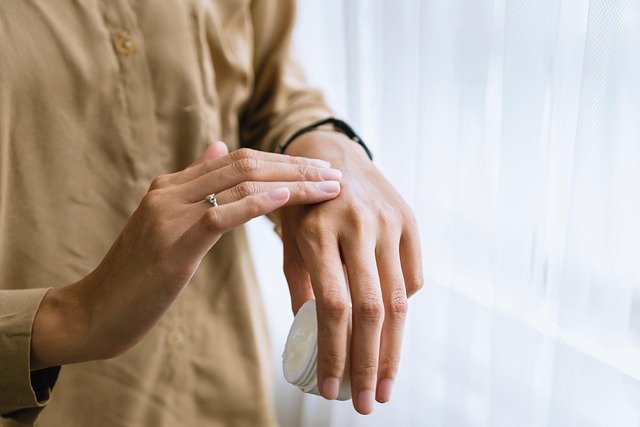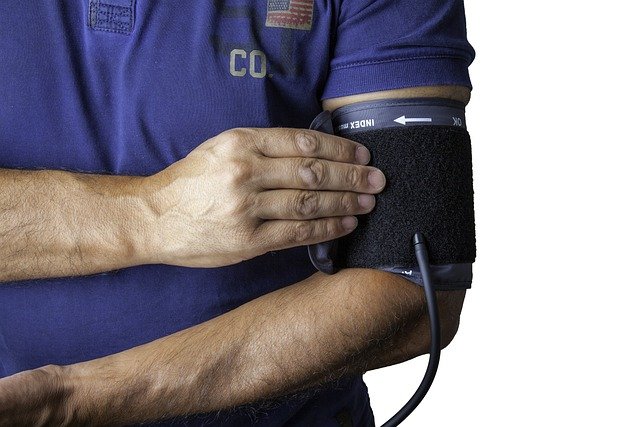Understanding Atopic Dermatitis: Managing Skin Health and Comfort
Atopic dermatitis involves skin changes that can affect individuals across different age groups, often characterized by periods of flare-ups and remission. This overview explores various aspects of skin care approaches and lifestyle considerations that might help manage these concerns. Understanding these options can contribute to more informed discussions with healthcare providers about maintaining skin health.

Atopic dermatitis represents one of the most common chronic skin conditions in the United States, affecting both children and adults. This inflammatory disorder disrupts the skin barrier, leading to dryness, irritation, and persistent discomfort. Understanding the nature of this condition is essential for effective management and long-term skin health. While atopic dermatitis cannot always be cured, various treatment approaches and lifestyle modifications can significantly reduce symptoms and improve daily comfort.
What Does Atopic Dermatitis Look Like?
Recognizing atopic dermatitis involves identifying specific visual characteristics that distinguish it from other skin conditions. The appearance varies depending on age, skin type, and severity. In infants, the condition typically presents as red, weeping patches on the cheeks, scalp, and extensor surfaces of the limbs. These areas may appear crusty or scaly, causing significant discomfort.
In older children and adults, atopic dermatitis commonly affects flexural areas such as the inner elbows, behind the knees, on the neck, and around the wrists and ankles. The skin in these regions often appears thickened, darker, and leathery due to chronic scratching and rubbing. During flare-ups, affected areas become intensely red, swollen, and may develop small, fluid-filled bumps. Between flare-ups, the skin typically remains dry, rough, and discolored. Understanding these visual patterns helps individuals monitor their condition and seek appropriate care when symptoms worsen.
How Is Atopic Dermatitis Treated?
Treatment approaches for atopic dermatitis focus on reducing inflammation, restoring the skin barrier, and managing symptoms. Topical corticosteroids remain the cornerstone of treatment, available in various strengths depending on severity and affected body areas. These medications reduce inflammation and itching when applied as directed by healthcare professionals.
Non-steroidal topical medications, including calcineurin inhibitors, offer alternatives for sensitive areas like the face and eyelids. These treatments work by modulating the immune response without the side effects associated with long-term steroid use. Moisturizers and emollients play a crucial role in daily management, helping to repair and protect the skin barrier. Applying thick, fragrance-free moisturizers immediately after bathing helps lock in moisture and prevent dryness.
For moderate to severe cases, systemic treatments may be necessary. Oral medications, phototherapy, and newer biologic injections target the underlying immune dysfunction. These advanced therapies have transformed outcomes for individuals who do not respond adequately to topical treatments alone.
What Skin Treatments Help Manage Symptoms?
Beyond prescription medications, various skin care practices and treatments support symptom management. Gentle bathing practices form the foundation of effective skin care. Lukewarm baths lasting 10 to 15 minutes help hydrate the skin without causing further irritation. Adding colloidal oatmeal or bath oils can provide additional soothing benefits.
Patting skin dry rather than rubbing, followed immediately by moisturizer application, maximizes hydration retention. Choosing appropriate skin care products is equally important. Fragrance-free, hypoallergenic cleansers and moisturizers minimize the risk of irritation. Products containing ceramides help restore the natural skin barrier, while those with ingredients like hyaluronic acid provide deep hydration.
Wet wrap therapy, performed under medical guidance, involves applying moisturizer and wrapping affected areas with damp bandages. This technique enhances medication absorption and provides intensive hydration during severe flare-ups. Identifying and avoiding personal triggers, such as certain fabrics, detergents, or environmental factors, also plays a vital role in preventing symptom escalation.
What Are Common Atopic Dermatitis Symptoms?
Atopic dermatitis presents with a constellation of symptoms that vary in intensity and frequency. Intense itching represents the hallmark symptom, often worsening at night and disrupting sleep. This itching creates a cycle where scratching damages the skin further, leading to increased inflammation and more itching.
Visible skin changes include redness, dryness, scaling, and thickening. Some individuals develop small, raised bumps that may ooze clear fluid when scratched. Over time, repeated scratching causes lichenification, where skin becomes thick, leathery, and darker than surrounding areas. The affected skin may also become more susceptible to bacterial, viral, and fungal infections due to the compromised skin barrier.
Beyond physical symptoms, atopic dermatitis often impacts emotional well-being. The visible nature of the condition, combined with persistent discomfort, can affect self-esteem, social interactions, and overall quality of life. Recognizing the full spectrum of symptoms helps individuals communicate effectively with healthcare providers and develop comprehensive management plans.
When Should You See a Dermatologist for Eczema?
Consulting a dermatologist becomes necessary when atopic dermatitis significantly impacts daily life or does not respond to over-the-counter treatments. Dermatologists specialize in diagnosing and treating skin conditions, offering expertise that goes beyond general medical care. If symptoms persist despite using moisturizers and mild topical treatments, professional evaluation can identify more effective treatment options.
Seeking dermatological care is particularly important when signs of infection appear, such as increased redness, warmth, pus, or fever. Dermatologists can prescribe appropriate antibiotics and adjust treatment plans to address complications. Additionally, if atopic dermatitis interferes with sleep, work, or social activities, specialized care can help regain control over symptoms.
Dermatologists also provide valuable guidance for individuals with atypical presentations or those who need advanced therapies. They can perform patch testing to identify specific allergens, prescribe systemic medications, or recommend phototherapy. Regular dermatological follow-up ensures treatment plans remain effective as the condition evolves over time.
Living with Atopic Dermatitis: Long-Term Management Strategies
Successful long-term management of atopic dermatitis requires a multifaceted approach combining medical treatment, lifestyle modifications, and self-care practices. Maintaining a consistent skin care routine forms the foundation of management. Daily moisturizing, gentle cleansing, and prompt treatment of flare-ups prevent symptom escalation and protect skin health.
Identifying and managing triggers is equally important. Common triggers include stress, certain foods, environmental allergens, temperature extremes, and irritating fabrics. Keeping a symptom diary helps identify personal triggers and patterns, enabling proactive avoidance strategies. Stress management techniques such as meditation, exercise, and adequate sleep support overall well-being and may reduce flare-up frequency.
Working collaboratively with healthcare providers ensures treatment plans remain effective and appropriate. Regular follow-up appointments allow for treatment adjustments based on symptom patterns and life changes. Staying informed about new treatment options and research developments empowers individuals to make informed decisions about their care. With proper management, most people with atopic dermatitis can achieve good symptom control and maintain healthy, comfortable skin.
Disclaimer: This article is for informational purposes only and should not be considered medical advice. Please consult a qualified healthcare professional for personalized guidance and treatment.



